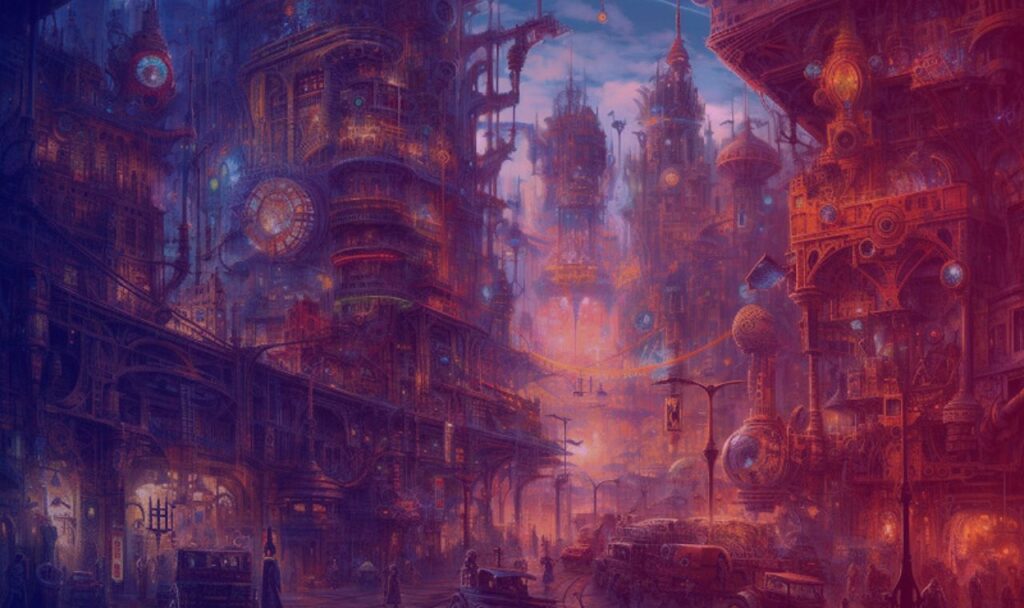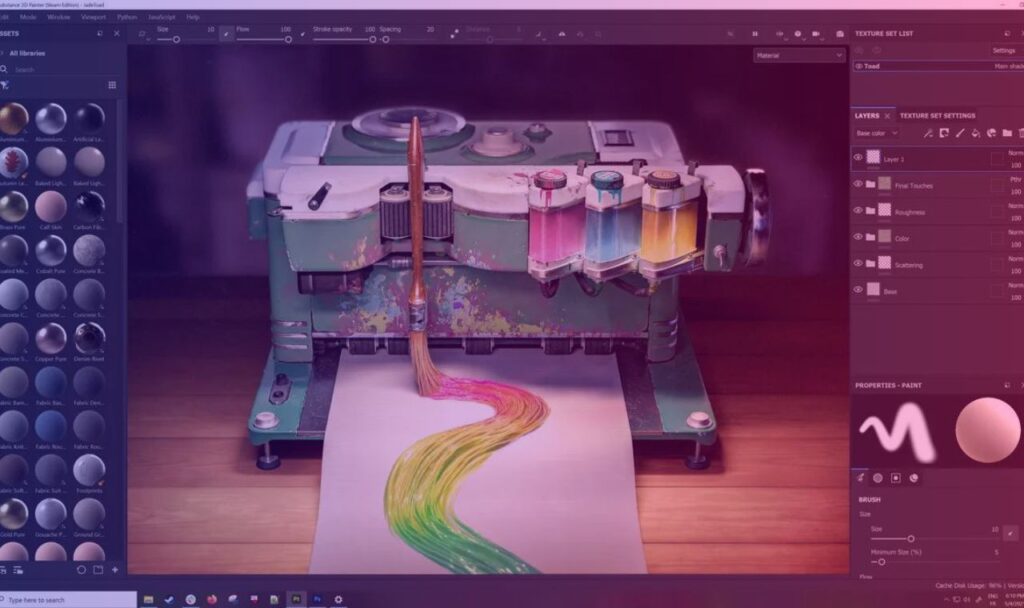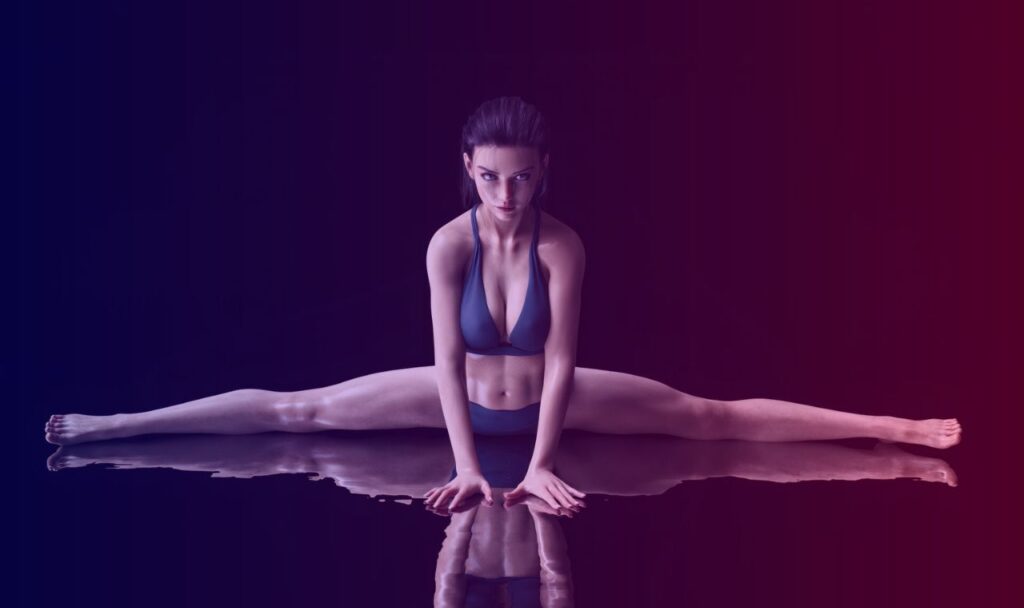Photorealism, the art of creating visually stunning and lifelike representations, has long captivated artists and enthusiasts alike. With its meticulous attention to detail and ability to transport viewers into a world of realism, photorealism has the power to turn imagination into reality. This artistic technique, achieved through a careful interplay of light, texture, and precision, brings forth images that are indistinguishable from photographs.
Photorealism goes beyond mere technical skill—it requires a deep understanding of form, color, and composition. Artists who master this discipline have an uncanny ability to capture every subtle nuance, every minute detail, in their work. From the play of light upon a surface to the intricate textures of everyday objects, photorealism breathes life into the canvas, drawing viewers into a realm that blurs the boundaries between art and reality.
The process of achieving photorealism is a journey of continuous exploration and refinement. Artists tirelessly study and observe the world around them, analyzing the interplay of light and shadow, meticulously documenting textures, and studying the intricacies of different materials. Through trial and error, they harness their technical skills and push the boundaries of their creativity to create art that is indistinguishable from reality.
Photorealism allows us to experience the extraordinary within the ordinary. Through this artistic approach, scenes and subjects that may seem mundane are transformed into captivating works that evoke a sense of wonder. Whether it’s a still life arrangement, a portrait, or a landscape, photorealism invites us to pause and truly appreciate the beauty and complexity of the world we inhabit. It challenges our perceptions and blurs the lines between what is real and what is crafted by the artist’s hand.
In a world where imagination and reality converge, photorealism stands as a testament to the power of artistic vision and technical mastery. It invites us to see beyond the surface, to delve into the intricacies of our surroundings, and appreciate the astonishing level of detail that can be captured through the art of photorealism. Through the skillful manipulation of mediums and an unwavering dedication to capturing reality, artists bring forth works that push the boundaries of what we perceive as possible, leaving us in awe of their ability to turn the ordinary into something truly extraordinary.
Table of Contents
Here are several fundamental principles and techniques that can greatly aid you in progressing toward the realm of stunningly realistic outcomes.
1. Study real-world references

To achieve photorealism, one essential aspect is studying real-world references. By closely observing and studying photographs or real objects relevant to the subject you aim to create, you can gain valuable insights into the elements that contribute to realism. Paying careful attention to lighting, textures, materials, and other details will allow you to replicate them accurately in your artwork or computer graphics. By analyzing how light interacts with different surfaces and materials, you can understand the interplay of shadows, reflections, and highlights that bring depth and believability to your work.
In the pursuit of photorealism, immersing yourself in real-world references becomes a crucial step. By examining photographs or physical objects related to your subject matter, you can gain a deeper understanding of the nuances that make objects or scenes appear realistic. This process involves studying the play of light and shadow, the tactile quality of textures, and the characteristics of various materials. By paying attention to these intricate details, you can capture and recreate them faithfully in your own creations, bringing them closer to the level of realism you desire.
Photorealism hinges on your ability to closely observe and analyze real-world references. By scrutinizing photographs or tangible objects relevant to your artistic vision, you can decode the visual cues that make them appear authentic. The interplay between light and shadow, the intricate textures that adorn surfaces, and the diverse materials that exist in the world—these are the elements that contribute to the illusion of reality. Through careful observation and study, you can internalize these features and incorporate them into your own artwork or digital creations, ultimately pushing the boundaries of photorealism.
In the quest for photorealism, the process of studying real-world references cannot be overstated. By closely examining photographs or tangible objects, you gain valuable insights into the intricate details that lend authenticity to your work. The careful analysis of lighting conditions, the nuanced textures and materials, and the meticulous observation of every contributing element allow you to recreate them with precision. By paying meticulous attention to these references, you empower yourself to infuse your creations with a sense of realism that captivates viewers and blurs the line between art and reality.
2. Master the fundamentals

To achieve photorealism, it is essential to master the fundamentals of art. Developing a strong foundation in art fundamentals such as perspective, proportion, shading, and color theory is crucial. Understanding these principles allows you to recreate real-world elements accurately and bring your artwork closer to achieving photorealism.
Perspective is vital in creating a sense of depth and spatial relationships within your artwork. By understanding perspective, you can accurately depict objects in three-dimensional space, making them appear more realistic. Properly applying proportion ensures that the sizes and proportions of objects are consistent and realistic, contributing to the overall believability of your artwork.
Shading plays a significant role in capturing the play of light and shadow on objects. By studying how light interacts with different surfaces and mastering shading techniques, you can create the illusion of volume and form, making your artwork appear more lifelike. Additionally, color theory helps you understand how colors interact and harmonize, allowing you to choose the right hues and create realistic color schemes that resemble real-world scenes.
By mastering these fundamental principles, you can lay a solid groundwork for achieving photorealism in your artwork. These principles serve as a bridge between your imagination and the real world, enabling you to recreate scenes, objects, and environments with accuracy and precision. As you continue to refine your skills in perspective, proportion, shading, and color theory, your ability to create photorealistic art will steadily improve, capturing the attention and admiration of viewers.
3. Use high-quality references

When striving for photorealism in your artwork or computer graphics, the importance of using high-quality references cannot be overstated. By gathering high-resolution images or physical samples that closely resemble the elements you aim to replicate, you provide yourself with invaluable guides throughout the creation process. These references offer a wealth of visual information that helps you capture the intricate details and nuances necessary to achieve a photorealistic outcome. From the texture of a weathered brick wall to the play of light on a delicate flower petal, these references serve as your visual compass, guiding you toward accuracy and realism.
High-resolution references enable you to zoom in and examine even the tiniest of details. They provide a level of clarity that allows you to observe the intricate interplay of light, the subtle variations in surface textures, and the precise color gradients that make an object appear truly lifelike. By closely studying these references, you gain insight into the specific characteristics and qualities that define the subject matter, enabling you to recreate them with accuracy and precision.
Working with high-quality references is particularly beneficial when attempting to replicate complex materials or intricate forms. Whether it’s capturing the translucency of crystal-clear glass or the weathered texture of an ancient statue, these references serve as visual benchmarks, ensuring that you capture the essence of the subject matter. They allow you to study how light interacts with various materials, enabling you to recreate the reflective properties, shadows, and highlights that contribute to photorealism.
Moreover, high-quality references not only aid in the replication of visual elements but also inspire creativity and enhance your artistic vision. By closely observing the intricate details and subtle nuances of real-world objects or photographs, you can gain a deeper understanding of their inherent beauty and uniqueness. This heightened awareness of the subject matter translates into your work, infusing it with a sense of authenticity and depth. So, when aiming for photorealism, never underestimate the power of high-quality references—they are an invaluable resource that will guide you toward achieving truly lifelike results.
4. Pay attention to lighting and shadows

Pay attention to lighting and shadows: Lighting is one of the most critical aspects when aiming for photorealism. The way light interacts with different materials and surfaces can drastically affect the realism of your artwork or computer-generated scenes. Understanding the behavior of light and shadows in various environments is essential to replicate those effects accurately. By studying how light falls on objects and how shadows are cast, you can create a more convincing illusion of depth and dimension.
To achieve photorealism, it’s crucial to observe and analyze how light interacts with different materials and surfaces in the real world. Notice how light reflects off shiny surfaces, how it diffuses through translucent objects, and how it casts shadows that change in intensity and direction based on the light source. By studying and replicating these lighting effects in your work, you can enhance the authenticity and believability of your creations.
The study of light and shadows is not limited to a single type of environment. Natural lighting, such as sunlight or moonlight, produces distinct effects compared to artificial lighting sources like lamps or fluorescent bulbs. Each setting creates its own unique interplay of light and shadow. By immersing yourself in the observation and understanding of these variations, you can develop the skills needed to accurately reproduce them in your artwork or computer-generated scenes.
Photorealism relies on your ability to capture the nuances of lighting and shadows. Every surface, texture, and object in your composition will react differently to light. By paying close attention to these interactions, you can create a visual experience that closely resembles reality. Whether you’re working with traditional art mediums or digital software, mastering the art of lighting and shadows is crucial for achieving the level of photorealism that captivates viewers and brings your creations to life.
5. Texturing and material creation

Texturing and material creation play a vital role in achieving photorealism. The careful attention to materials and textures greatly contributes to the overall realism of a digital artwork or 3D scene. By using high-resolution textures, artists can capture intricate details and subtle nuances, enhancing the believability of the final result. Accurate material properties, such as reflectivity, roughness, and transparency, further enhance the authenticity of objects. By simulating surface imperfections, like scratches, dents, or irregularities, artists can add that extra touch of realism that makes objects feel more lifelike.
Photorealism hinges on the ability to recreate the visual qualities of real-world materials. Using high-resolution textures is essential to capture the fine details present in different materials, whether it’s the roughness of a weathered wooden surface or the glossy sheen of polished metal. These textures serve as a foundation for accurately representing the materials in the digital environment. By paying close attention to the properties of materials, such as their reflective or refractive nature, artists can simulate how light interacts with them, achieving a heightened sense of realism.
Surface imperfections are crucial for achieving photorealism in texturing and material creation. Real-world objects are rarely flawless, and imperfections add depth and authenticity to the digital representation. By meticulously incorporating imperfections such as scratches, stains, or bumps into the textures, artists can replicate the organic nature of materials. These subtle variations break up the uniformity, making the objects visually compelling and convincing. Attention to detail in simulating these imperfections helps bridge the gap between the digital and real world, enhancing the overall photorealistic quality of the artwork.
In summary, to achieve photorealism, texturing, and material creation are fundamental aspects to consider. Utilizing high-resolution textures, applying accurate material properties, and simulating surface imperfections are key techniques that contribute to the lifelike appearance of objects. By paying careful attention to these aspects, artists can create digital works that closely resemble real-world materials, enhancing the overall photorealistic quality of their creations.
6. Attention to detail in post-processing

Attention to detail in post-processing is crucial when striving for photorealism in digital images. The process of refining and enhancing your work through post-processing techniques can elevate the realism of your final image. One key aspect is color correction, which involves adjusting the colors, tones, and hues to accurately represent the lighting conditions and mood of the scene. By carefully fine-tuning the colors, you can create a more believable and immersive visual experience for the viewer.
Depth of field is another powerful tool that adds realism to digital images. Mimicking the way our eyes focus on objects in real life, depth of field allows you to control which parts of the image are in sharp focus and which are blurred. By selectively blurring the background or foreground, you can create a sense of depth and draw attention to specific elements, enhancing the overall realism of the composition.
Motion blur is yet another technique that can contribute to the photorealism of your digital images. By simulating the blur caused by moving objects, you can convey a sense of movement and dynamism. Whether it’s capturing the motion of a fast-moving car or the swaying of tree branches in the wind, adding motion blur can make your scene feel more lifelike and immersive.
Lastly, fine-tuning your digital images is an essential step in achieving photorealism. This involves carefully examining the details, adjusting the sharpness, contrast, and saturation levels, and making subtle refinements to ensure every element is rendered with precision. By paying attention to these minute details, you can create a visually stunning image that closely resembles reality, captivating the viewer’s eye and evoking a sense of awe and immersion.
7. Continuous Learning

Photorealism is a pursuit that requires a commitment to continuous learning. The field of computer graphics is constantly evolving, and staying abreast of new techniques, software tools, and resources is essential for achieving photorealistic results. By immersing yourself in the ever-changing landscape of computer graphics, you can uncover innovative methods that push the boundaries of what is possible.
One key aspect of continuous learning is exploring new techniques. As technology advances, new algorithms, and rendering methods emerge, providing exciting opportunities to enhance the realism of your work. By actively seeking out and experimenting with these techniques, you can refine your skills and bring your creations closer to the realm of photorealism.
Software tools play a crucial role in the journey toward photorealism. With each passing year, powerful software applications are developed, specifically designed to cater to the needs of digital artists and 3D modelers. Keeping up with the latest software updates and learning how to effectively utilize new features can greatly improve your workflow and help you achieve the level of detail and accuracy required for photorealistic renderings.
In addition to exploring new techniques and software tools, staying connected to a network of resources is vital. Online communities, forums, and educational platforms provide a wealth of information, tutorials, and insights from experienced professionals. Engaging with these resources allows you to tap into the collective knowledge of the computer graphics community, gain valuable feedback, and discover novel approaches to photorealism.





We’re a group of volunteers and starting a new scheme in our community. Your web site provided us with valuable information to work on. You have done a formidable job and our entire community will be grateful to you.